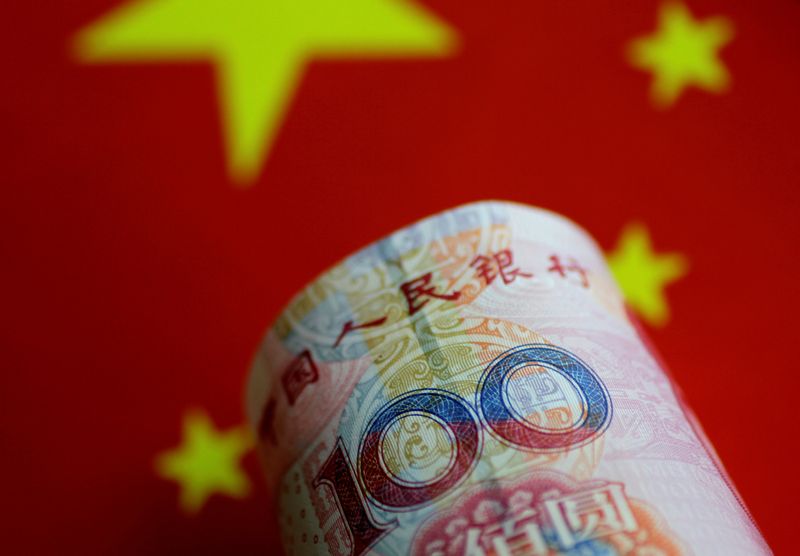SHANGHAI (Reuters) - China's central bank still has many policy tools to guide yuan expectations and the currency is unlikely to have persistent sharp depreciation, a former People's Bank of China (PBOC) official said.
The remarks by Sheng Songcheng, the former head of the statistics and analysis department at the PBOC, come as the yuan has lost nearly 12% to the dollar so far this year. The greenback has steadily gained against many currencies in light of hawkish Federal Reserve monetary tightening.
"If the Chinese economy could stabilise and recover quickly, the spillover effect of U.S. monetary policy will be greatly reduced," Sheng said, expecting the yuan to trade in a range of 7.0 to 7.3 per dollar for the remainder of the year.
COVID-19 shocks, disruptions to energy and food supplies caused by the Ukraine crisis and slowing global growth have posed strong headwinds to the world's second-largest economy.
The third quarter for China's economy is likely to underline the intensifying challenges at home and abroad, a Reuters poll showed. A rebound in growth will still leave it poised for one of its worst years in almost half a century.
The PBOC said recently that stabilising the yuan was a top priority and warned market participants against making heavy one-way bets on the currency.

The PBOC could "resume using the counter-cyclical factor in midpoint fixing, or increase the size of bill issuance in the offshore market to tighten yuan liquidity when necessary" to guide market expectations, Sheng added.
Monetary authorities have asked domestic banks to revive a yuan fixing toolkit abandoned two years ago as they work to defend the rapidly weakening currency, a person familiar with the yuan rate-setting process told Reuters in late September.